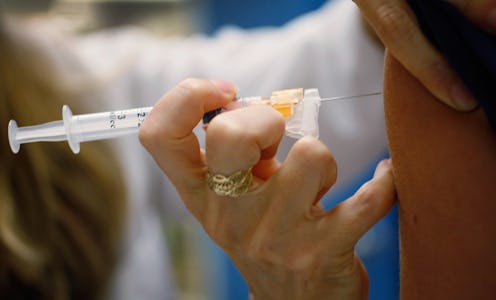News
The Surprising Success Of The Partial HPV Vaccine
According to a new study by Swedish researchers, not only can the HPV vaccine help prevent genital warts, but girls who only received two of three HPV doses were almost as protected as girls who received all three doses. The research, published in the Journal of the American Medical Association, collected data from the health records of a million girls between the ages of 10-24. The results? There was almost no difference between the number of cases of genital warts in girls who'd had two doses of the vaccine, and girls who'd had three.
Nine in 10 cases of genital warts are caused by strains of HPV. And while this latest study is good news for girls who have had partial HPV vaccines, remember that the HPV vaccine's primary goal is to prevent cervical cancer. While protection against long-term genital warts is yet another great way the HPV vaccine protects the body — it's also been shown to possibly help prevent throat cancer — researchers will need to conduct more studies to see if the risk of cervical cancer is also greatly diminished with only two HPV vaccine doses.
While Gardasil, one of the main HPV vaccines, has been met with controversy, nearly all of the arguments against it are likely unfounded. Additionally, recent reports have demonstrated that, no, HPV vaccines don't lead to more teenage sex.
The HPV vaccine can also protect against throat cancer, and given that rates of oral cancer are frighteningly high, women of all ages should probably consider getting the vaccine.
Another HPV vaccine, Cervatrix, has also seen success in one out of the three suggested doses. That said, Cervarix only protects against HPV strains 16 and 18, which are the strains most commonly found in white women.
As Bustle reported:
Right now, current HPV vaccines mainly target the subtypes 16 and 18. They’re the ones that most commonly cause cervical cancer, but they’re both also most frequently found in Caucasian women — they only show up half as often in African-American women. Gardasil also targets strains 6 and 11, but neither are as common in either group. It could help explain why, despite the vaccine, African-American women are 20 percent more likely to be diagnosed with cervical cancer. Or, given the drug’s relatively recent entrance onto the pharmaceutical market, it also raises serious red flags for vaccine manufacturers and the breadth of such medications’ coverage.
Image: Getty Images
